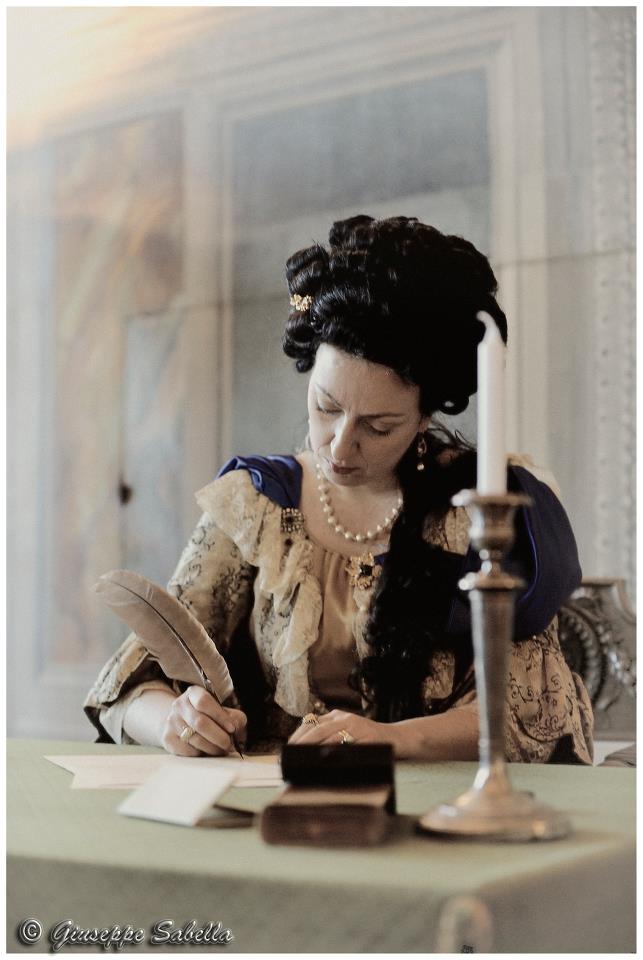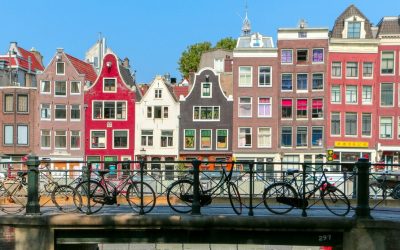 di Filippo Giovannelli – Anna Maria Luisa, figlia di Cosimo III de’ Medici e di Margherita-Luisa d’Orléans, nacque a Firenze l’11 Agosto del 1667, era la seconda di tre fratelli: Ferdinando (1663) e Gian Gastone (1671).
di Filippo Giovannelli – Anna Maria Luisa, figlia di Cosimo III de’ Medici e di Margherita-Luisa d’Orléans, nacque a Firenze l’11 Agosto del 1667, era la seconda di tre fratelli: Ferdinando (1663) e Gian Gastone (1671).
L’infanzia di Anna Maria Luisa, fu segnata dai frequenti litigi fra il padre, un uomo tetro, silenzioso e profondamente religioso, e la madre, una donna vivace e scherzosa, che detestava il marito e la vita a Firenze, e che nel 1674 lasciò la Toscana per ritirarsi in un convento di Montmartre.
Il granduca Cosimo III, il cui cattolicesimo era diventato sempre più rigido, impose una serie di restrizioni e di regole mirate a bandire l’immoralità e le eresie, oltre ad opprimere la città con le sue pesanti tasse e altri provvedimenti finanziari.
Il primogenito Ferdinando era diventato un giovane attraente, brillante e intelligente; il Granduca decise di farlo sposare al più presto: la dinastia aveva bisogno di un erede.
Sfortunatamente la moglie scelta per lui, la principessa Violante Beatrice di Baviera, era una giovane scialba ed emotiva.
Lui praticamente la ignorava, e lei, in ogni caso, era sterile. Un giorno Ferdinando partì per Venezia, dove contrasse la sifilide da una dama di nobile famiglia.
Poiché non ci si poteva aspettare un erede da Ferdinando, il Granduca Cosimo concentrò la sua attenzione sul secondogenito Gian Gastone.
Quest’ultimo, di tendenze omosessuali ancora più forti di quelle del fratello, passava la maggior parte del tempo da solo, dedicandosi a studi di botanica o all’apprendimento di lingue straniere.
Si sposò con la figlia del duca di Sassonia-Lauenberg e vedova del conte palatino Filippo di Neuburg, una donna di una bruttezza veramente eccezionale, litigiosa ed assolutamente priva di attrattiva.
La moglie lo trascinò nel villaggio di Reichstadt, vicino Praga, ma il luogo e la donna disgustavano Gian Gastone. Il loro rapporto si fece rigido e distante ed i due non ebbero mai figli.
Cosimo III aveva fatto abbandonare il cappello cardinalizio al fratello minore Francesco Maria, maritato ad una giovanissima principessa (Eleonora Gonzaga) nella vana speranza di avere un erede legittimo, ma anche in questo caso non si ebbe un erede.
Quindi, entrambi i fratelli di Anna Maria Luisa dimostrarono scarsa attitudine alle responsabilità di governo e poca responsabilità nei confronti della casata Medicea.
Anna Maria era una ragazza alta, bruna, con una voce mascolina e una risata sonora; Guglielmo, l’Elettore Palatino, la sposò a Innsbruck, e subito dopo le trasmise una malattia venerea: tale malattia fu ritenuta responsabile degli aborti che angustiarono la sua giovinezza.
Visse ad Innsbruck fino alla morte del marito avvenuta nel 1716, poi tornò a Firenze.
Nel 1723 morì Cosimo III e nel 1737 Gian Gastone. Ferdinando era morto già diversi anni prima del padre, quindi Anna Maria Luisa era rimasta l’ultima dei Medici, e ne era sempre ben consapevole. Alla sua morte la Toscana sarebbe passata sotto il dominio dei Lorena, nella persona del duca Francesco, marito di Maria Teresa d’Austria.
Alla morte del fratello Gian Gastone nel 1737 il rappresentante lorenese Principe di Craon offrì ad Anna Maria Luisa la reggenza del Granducato in nome di Francesco Stefano di Lorena, nuovo sovrano, ma la principessa declinò l’offerta, pur rimanendo a vivere in Palazzo Pitti e dedicandosi alla sua passione per l’arte e l’antiquariato.
Fu proprio questa passione a farle compiere il gesto per cui è rimasta famosa e che fu la vera fortuna di Firenze: nel 1737 Anna Maria Luisa stipulò con la nuova dinastia regnante il cosiddetto “Patto di Famiglia” che stabiliva che i Lorena non potessero trasportare
“o levare fuori della Capitale e dello Stato del GranDucato … Gallerie, Quadri, Statue, Biblioteche, Gioje ed altre cose preziose… della successione del Serenissimo GranDuca, affinché esse rimanessero per ornamento dello Stato, per utilità del Pubblico e per attirare la curiosità dei Forestieri”.
Con questo patto Anna Maria Luisa permise che Firenze non perdesse nessuna opera d’arte e che non subisse la sorte di Urbino, che all’estinzione della casata dei Della Rovere era stata letteralmente svuotata dei suoi tesori artistici.
Gesto ancora più lungimirante fu il porre particolare attenzione alla frase “per attirare la curiosità dei Forestieri”.
Da questo si vede la grande levatura culturale di Anna Maria, il grande spirito di conservazione ma anche il lungimirante prevedere che la bellezza delle opere poteva essere goduta anche da altri, prevedendo un turismo che allora era solo un’idea.
L’Amministrazione comunale ha inserito questa ricorrenza come festa ufficiale del Comune di Firenze insieme a altre feste e ricorrenze tradizionali che si svolgono in città. La ricorrenza della morte di Anna Maria Luisa (o Ludovica) de’ Medici – Firenze, 18 febbraio 1743 viene ogni anno commemorata. L’iniziativa voluta da un gruppo di storici e di studiosi, alle Tradizioni Popolari Fiorentine del Comune di Firenze ormai da vari anni.
Allo stesso modo da qualche anno, proprio in Palazzo Vecchio viene riproposta una rappresentazione teatralizzata dell’Ultima dei Medici. Nella foto a margine (Giuseppe Sabella), un’attrice ricorda in modo esemplare il gesto della firma del Patto di Famiglia nelle vesti della triste e lungimirante principessa.
foto: Giuseppe Sabella by Filippo Giovannelli – Anna Maria Luisa, the daughter of Cosimo III de ‘Medici and Marguerite-Louise d’Orléans, was born in Florence on August 11, 1667, was the second of three brothers: Ferdinand (1663) and Gian Gastone (1671).
by Filippo Giovannelli – Anna Maria Luisa, the daughter of Cosimo III de ‘Medici and Marguerite-Louise d’Orléans, was born in Florence on August 11, 1667, was the second of three brothers: Ferdinand (1663) and Gian Gastone (1671).
The children of Anna Maria Luisa, was marked by frequent quarrels between the father, a grim, silent and deeply religious, and his mother, a woman lively and playful, who hated her husband and lives in Florence, and in 1674 left Tuscany to retire to a convent of Montmartre.
The Grand Duke Cosimo III, whose Catholicism had become increasingly rigid, imposed a number of restrictions and rules aimed at banning the immorality and heresies, and to oppress the city with its heavy taxes and other financial measures.
The eldest son Ferdinand had become an attractive young, bright and intelligent, and the Grand Duke had him marry as soon as possible: the dynasty was in need of an heir.
Unfortunately, the wife chosen for him, Princess Violante Beatrice of Bavaria, was a pale young and emotional.
He practically ignored her, and she, in any case, was barren. One day, Ferdinand departed for Venice, where he contracted syphilis from a lady of noble family. Because you could not wait for an heir of Ferdinand, Grand Duke Cosimo focused his attention on the second Gian Gastone.
The latter, with homosexual tendencies even stronger than those of his brother, he spent most of his time alone, dedicating research in botany or the learning of foreign languages. He married the daughter of the Duke of Saxe-Lauenberg and widow of Philip Count Palatine of Neuburg, a woman of a truly exceptional ugliness, quarrelsome and absolutely lacking in attractiveness.
His wife dragged him in the village of Reichstadt, near Prague, but the place and the woman disgusted Gian Gastone. Their relationship became stiff and distant, and the two never had children.
Cosimo III had to abandon the cardinal’s hat to his younger brother Francesco Maria, married to a young princess (Eleonora Gonzaga) in the vain hope of having an heir apparent, but in this case there was not an heir. So, both brothers of Anna Maria Luisa showed poor attitude to the responsibilities of government and little responsibility towards the Medici dynasty.
Anna Maria was a tall, dark, with a masculine voice and a loud laugh; Wilhelm, Elector Palatine, married in Innsbruck, and soon after passed a venereal disease: the disease was thought to be responsible for the abortions that angustiarono its youth. He lived in Innsbruck until the husband’s death in 1716, then returned to Florence.
In 1723 Cosimo III died in 1737 and Gian Gastone. Ferdinand had died several years before his father, and Anna Maria Luisa de ‘Medici had been the last, and I was always well aware of. At his death, Tuscany would pass under the dominion of Lorraine, in the person of Duke Francis, husband of Maria Theresa of Austria.
On the death of his brother Gian Gastone in 1737 the Prince of Lorraine representative Craon offered to Anna Maria Luisa the regency of the Grand Duchy in the name of Francis Stephen of Lorraine, the new sovereign, but the princess declined, but remained to live in the Palazzo Pitti and devoting himself to his passion for art and antiques.
It was this passion in them to make the gesture that has remained popular and that was the real fortune of Florence in 1737 Anna Maria Luisa stipulated by the new ruling dynasty known as the “Family Compact”, which stated that the Lorraine could not carry
“Or raise outside capital and the rule of the Grand Duchy … Galleries, Paintings, Statues, Libraries, jewels and other precious things … the succession of the Most Serene Grand Duke, so that they remain for the ornament of State for Public utilities and attract the curiosity of Foreigners “.
With this pact Anna Maria Luisa allowed that Florence did not lose any work of art and does not suffer the fate of Urbino, that the extinction of the house of Della Rovere was literally emptied of its treasures. Even more far-sighted gesture was to pay particular attention to the phrase “to attract the curiosity of Foreigners”.
From this we see the cultural stature of Anna Maria, the great spirit of conservation but also the far-sighted provide that the beauty of the works could be enjoyed by others, providing a tourist who was then just an idea.
The municipal government has entered this event as an official holiday of the City of Florence along with other traditional festivals and celebrations that take place in the city. The anniversary of the death of Anna Maria Luisa (or Ludovica) de ‘Medici – Florence, February 18, 1743 is commemorated every year. The initiative launched by a group of historians and scholars, the Traditions of the Florentine Commune of Florence several years ago.
Similarly for some years, in Palazzo Vecchio is revived a dramatized representation of the Last of the Medici. In the photo on the sidelines (Joseph Sabella), an actress recalls in an exemplary manner the act of signing the Covenant Family in the role of the sad and forward-looking princess.
photo: Giuseppe Sabella




0 commenti